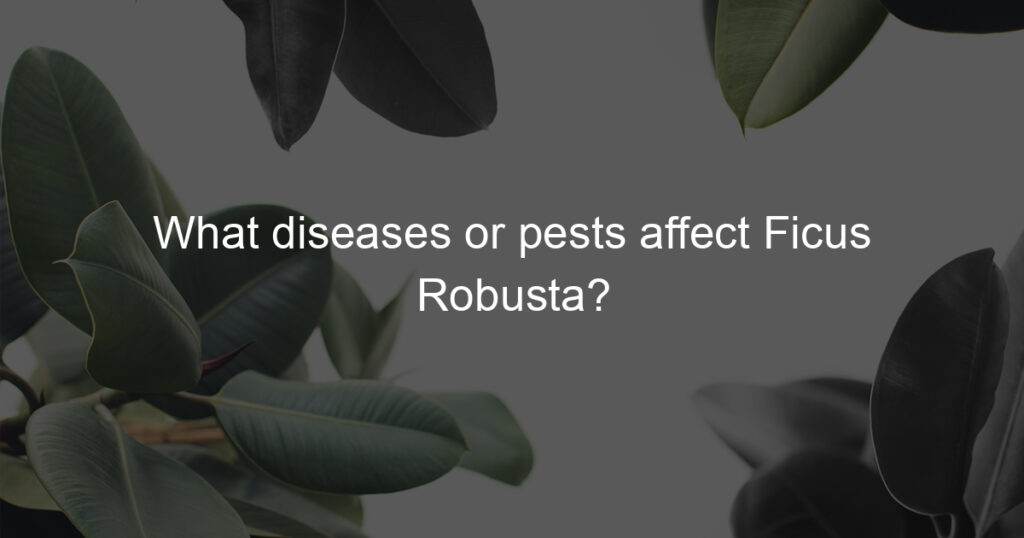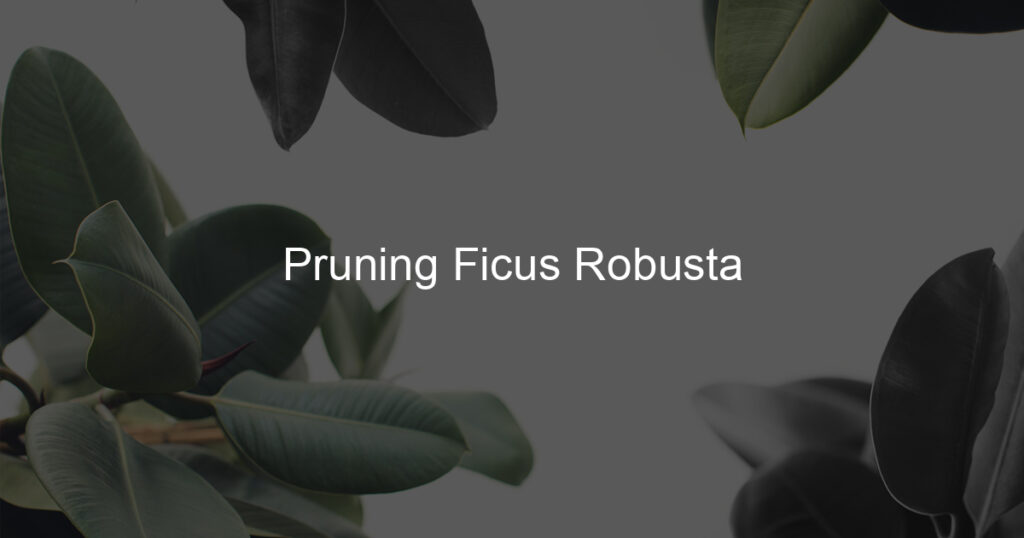If you’ve recently added a Ficus Robusta to your home, one of the most important steps in keeping it healthy and happy is giving it quality soil. Knowing what type of soil your Ficus Robusta needs can be confusing for even experienced plant lovers – but don’t worry!
In this blog post, we’ll break down exactly what type of soil you need to give your robusta the best start. From figuring out its nutrient requirements, choosing appropriate drainage materials, and selecting the right composition – we’ll cover everything you need to know to keep your Ficus robusta growing strong!
What soil for Ficus elastica robusta?
Ficus elastica robusta, also known as rubber fig, is a classic houseplant that loves to thrive in soil with ample drainage. When planting ficus elastica robusta, you’ll want to find a good potting mix with high organic matter content and pH between 6.0 and 7.0.
Coco coir can be used to provide extra drainage and aeration for your plant. Peat moss or compost is also recommended for adding nutrients to the soil.
When caring for your ficus elastica robusta, make sure the soil stays evenly moist during the growing season but let it slightly dry out between watering it to avoid over-watering. With well-drained soil, adequate sunlight, and regular watering your Ficus elastica robusta is sure to be happy!
What is the best soil mix for a ficus tree?
When it comes to growing a lush and healthy ficus tree, choosing the right soil mix is essential. Ficus plants thrive in well-draining soils that are rich in organic matter.
A good combination of topsoil, peat moss, and compost with added perlite will give the Ficus all the nutrients it needs for strong growth. Be sure to check your soil’s pH balance as well – ficus trees grow best in slightly acidic soil with a pH anywhere between 5.5-6.5.
If you’re having trouble finding the right soil mix, be sure to ask your local garden center – they’ll have plenty of advice to help you out!
What is the best fertilizer for Ficus elastica?
Ficus elastica, a type of rubber plant, is a beautiful and popular houseplant. While it’s not particularly difficult to care for, you want to make sure you are using the best fertilizer for it for optimal growth.
The two most important aspects of the ideal fertilizer are that it provides balanced nutrition and has slow or controlled release properties. You want to give your Ficus enough nutrients to keep it healthy and growing, but not so much that it burns the plant or causes an imbalance.
For consistent results over time with minimal effort, consider using a formulated slow-release fertilizer like Osmocote. This ensures that each feeding lasts up to six months without causing any harm to your precious little Ficus!
How can I increase my Ficus growth?
Ficus plants are relatively easy to care for and can provide a beautiful addition to any home. However, if you want your plant to grow quickly and healthily there are some steps you should take.
First, make sure that your ficus is in the right soil mix – one with ample organic matter and good drainage. Then, make sure to give it the right amount of light – not too much and not too little. Finally, feed your ficus regularly with a slow-release fertilizer for even growth.
Can I use potting soil for ficus?
When it comes to growing and caring for a ficus, using potting soil can be beneficial. Potting soil has all the essential nutrients plants need to stay healthy and grow properly. Plus, it’s lightweight and easily accessible.
Not to mention, you don’t have to worry about it turning into mud when given too much water like soil took directly from the ground might tend to do.
The downside? Potting soil can be more expensive than other types of soil and can contain things like fertilizers or other chemicals that your ficus may or may not need, so make sure you factor that into your decision before purchasing.
Do rubber plants like deep pots?
If you’re looking for the perfect houseplant, then you may want to consider a rubber plant. Despite being tough and capable of living in various conditions, one important thing to keep in mind is the depth of the pot.
Rubber plants do like deeper pots – generally about 20% deeper than the root ball size will provide the best growth – because this gives them plenty of room for their strong roots to spread out.
It’s also a great way to encourage larger leaves, but be sure not to let them sit in water as they don’t enjoy wet feet. So make sure you provide your rubber plant with an appropriately sized pot and you’ll be rewarded with lush foliage!
How do you take care of a ficus robusta plant?
Taking care of a ficus robusta plant is quite easy – all you need to do is give it the right environmental conditions and a bit of regular TLC.
This type of ficus thrives in bright, indirect sunlight with temperatures between 65°F and 80°F; in the winter, however, they can tolerate temperatures as low as 50°F.
When watering your plant, make sure to drench the soil every week or two but don’t let it become soggy – if this happens, your robusta may not survive! During its growing season (spring through summer), add an organic fertilizer monthly for extra nutrition.
Lastly, dust off its leaves every few weeks and clip away brown or yellowing ones using pruning shears. With this effortless care routine, your beautiful ficus robusta can live a healthy and long life!
Summary
In summary, the Ficus Robusta is a beautiful, robust tree that is sure to bring life and joy to the home for many years. When it comes to its soil, however, it’s important to remember that the Ficus Robusta prefers a well-draining type of soil to thrive.
A mixture of potting soil, sand, or vermiculite, with added compost or manure, would create an adequate environment for this plant. If you find yourself struggling with your Ficus’ soil needs, try opting for a terracotta pot which may provide better drainage than regular pots.
With proper care and maintenance, your Ficus Robusta will surely reach its perfection! So if you’ve been wanting to give your house a breath of fresh air, the Ficus Robusta could be just what you need.







